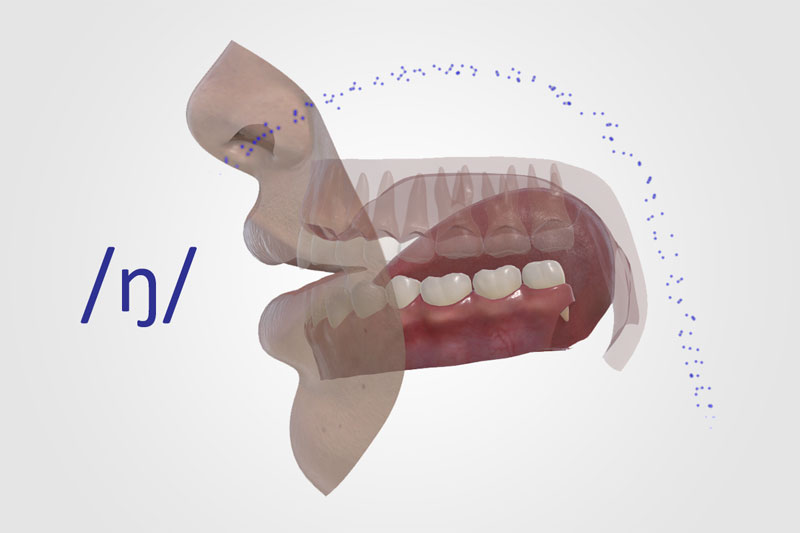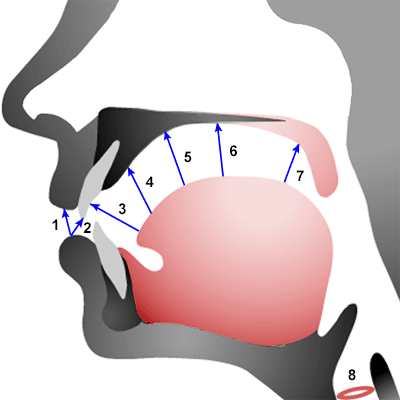English consonant sounds
In contrast to the open sounds of vowels, consonants are closed sounds. This means there is some type of obstruction to the airflow from the lungs by parts of the mouth coming into contact with each other (or very nearly contacting) and so closing off the free flow of air.
Pronunciation Coach 3D features 24 English consonants and these are arranged into five main groups. Click on the links to watch a short 3D animation of how each consonant is produced:
| Group | Description | Example |
|---|---|---|
| Plosives | Sounds that cannot be sustained and which have a 'popping' quality | /p/ as in pea /b/ as in boy. |
| Nasals | Sounds in which the escaping air passes through the nasal cavity | /m/ as in map /n/ as in nap. |
| Fricatives | As air exits through the mouth, it forces its way through a narrowed gap to create turbulence or friction | /s/ as in so /f/ as in fit. |
| Affricates | Combination sounds that begin with a complete obstruction formed by the tongue tip contacting the alveolar ridge, before the air is released slowly with friction | /ʧ/ as in chop /ʤ/ as in jam. |
| Approximants | A group of four sustainable sounds | /w/ as in we /r/ as in red /l/ as in let /j/ as in you. |
In addition to the above main groups, consonants can be further described in terms of voicing, place of articulation and manner of articulation:
Voicing
Voicing refers to whether or not the vocal folds are vibrating during the production of the consonant. If they are not vibrating the sound is voiceless and if they are vibrating then the sound is voiced.
Pronunciation Coach 3D
Pronunciation Coach 3D uses state-of-the-art computer animation and 3D modelling techniques to illustrate how to pronounce all of the sounds in the English language, and how to combine these sounds to pronounce any word or sentence.
Read more...
Place of articulation
Place of articulation refers to the place in the vocal tract where the two articulators come together. There are eight places:

| Place | Description | |
|---|---|---|
| 1 | Bilabial | Two lips come together |
| 2 | Labio-dental | Lip and teeth come together |
| 3 | Dental | Tongue contacts the teeth |
| 4 | Alveolar ridge | Tongue tip moves towards the gum ridge just behind the upper incisors |
| 5 | Post alveolar | Tongue tip is close to the position just behind the alveolar ridge, towards the back of the mouth |
| 6 | Palatal | Tongue moves towards the roof of the mouth (palate) |
| 7 | Velar | The back of the tongue moves towards the soft palate (velum) |
| 8 | Glottal | the only glottal consonant in English is /h/ as in how. Strictly speaking, this does not involve two articulators coming together. The sound is simply the friction caused by air being expelled through the gap between the vocal cords (glottis) |
Manner of articulation
Manner of articulation indicates the type of contact that is made between the two articulators and is defined simply by the five main groups described above: plosive, nasal, fricative, affricate or approximant. The table below summarises the 24 main consonants of English in terms of their voicing, place and manner. Click on the links to watch a short video of how each consonant is produced.